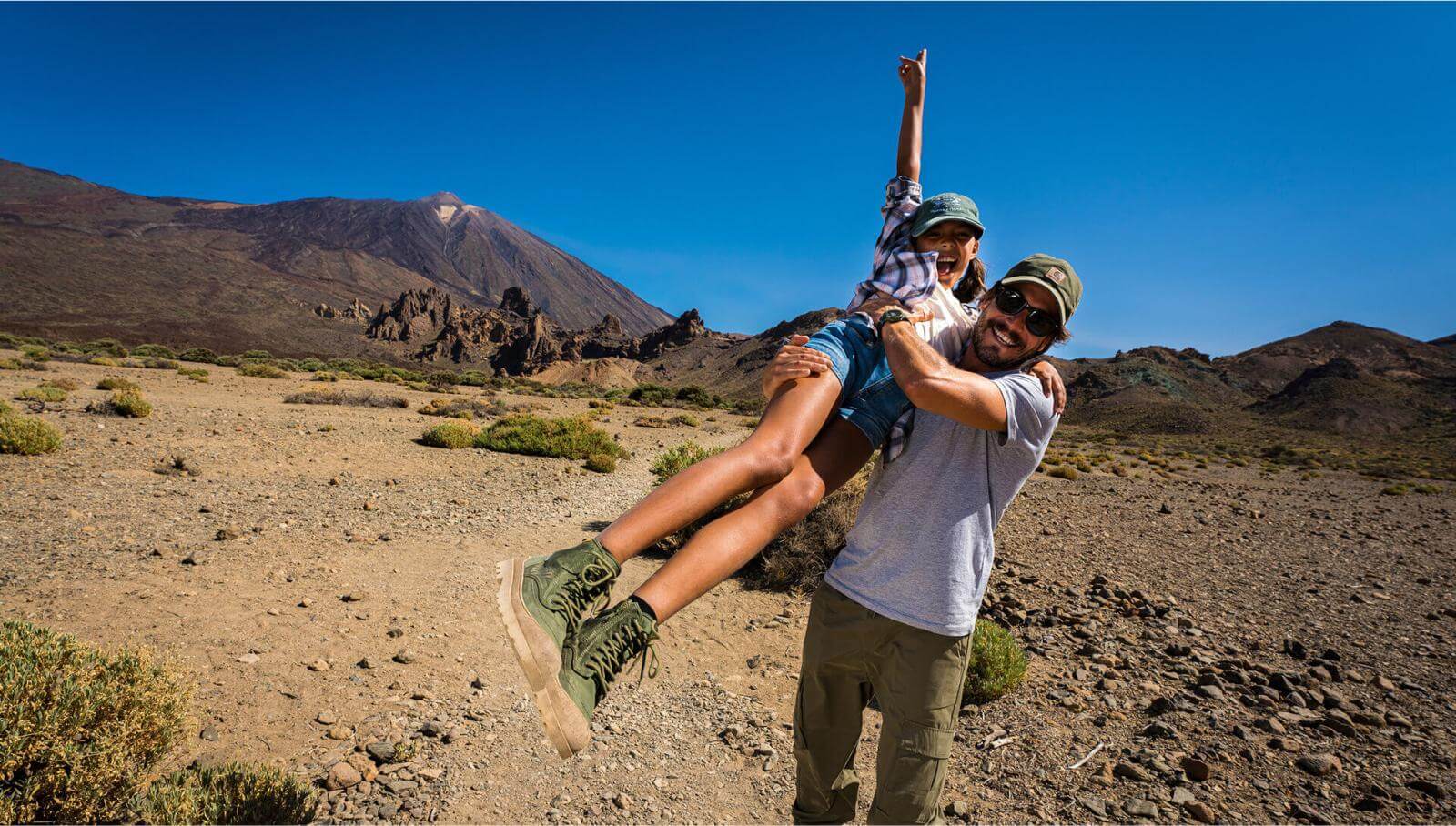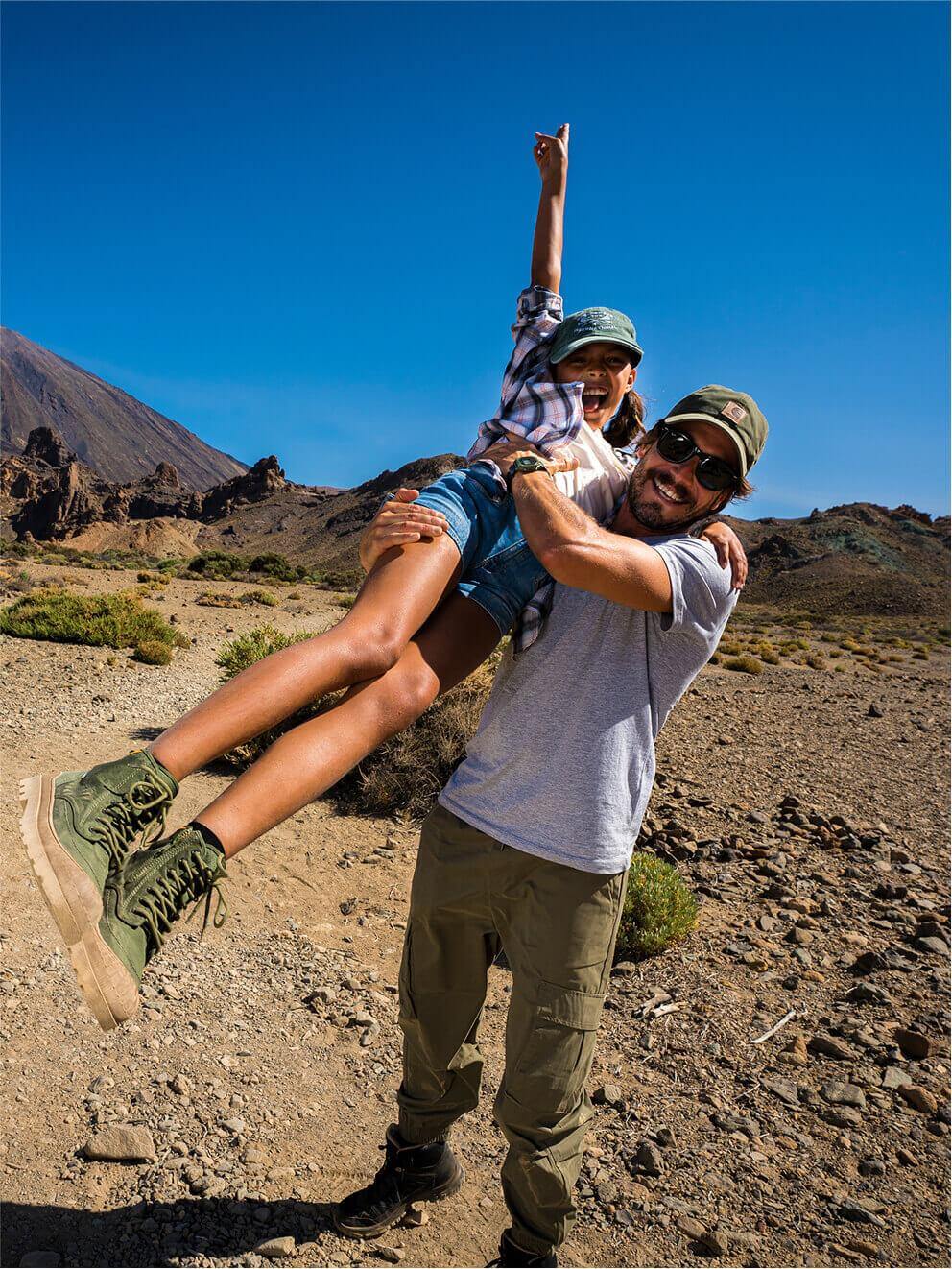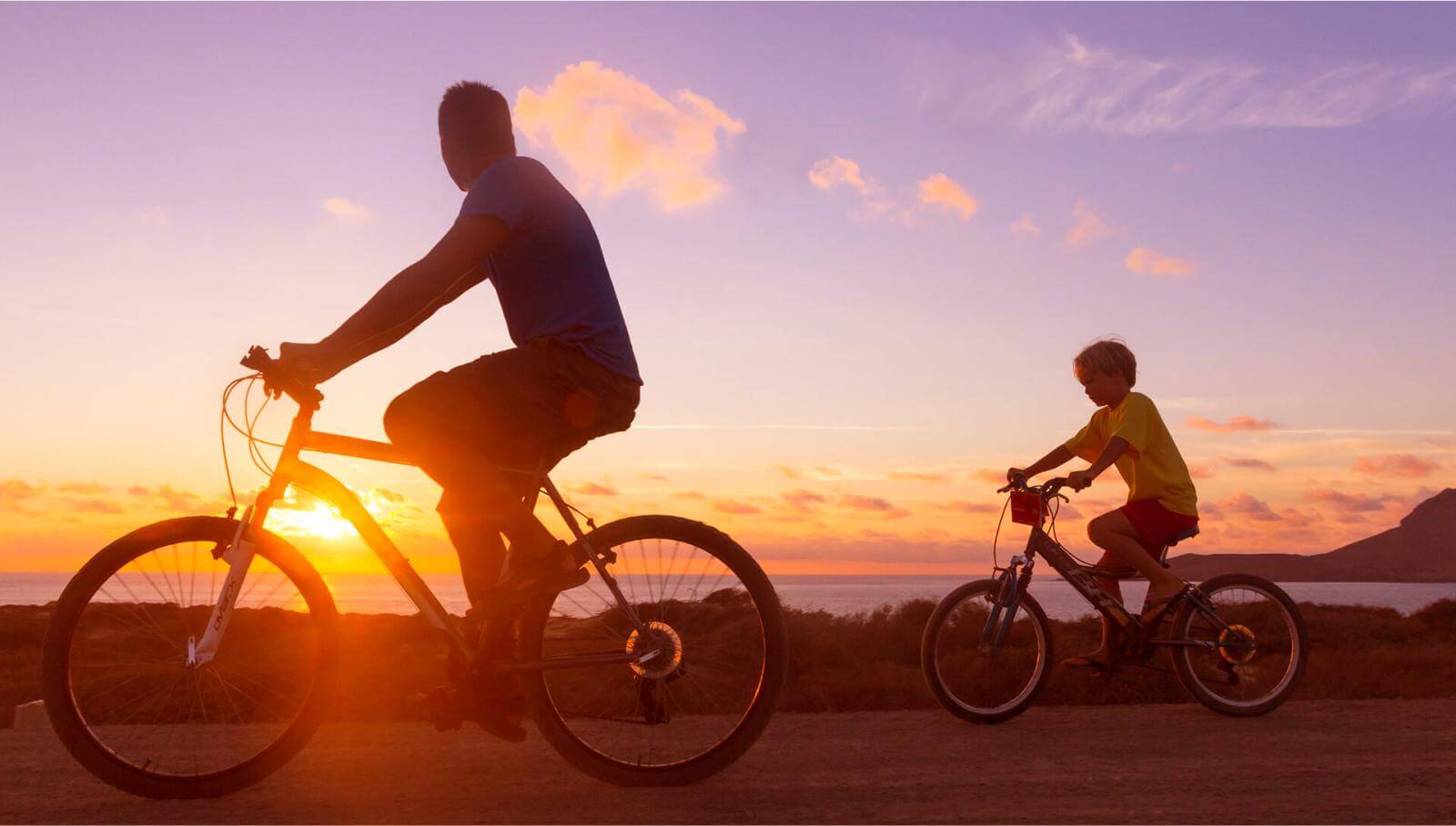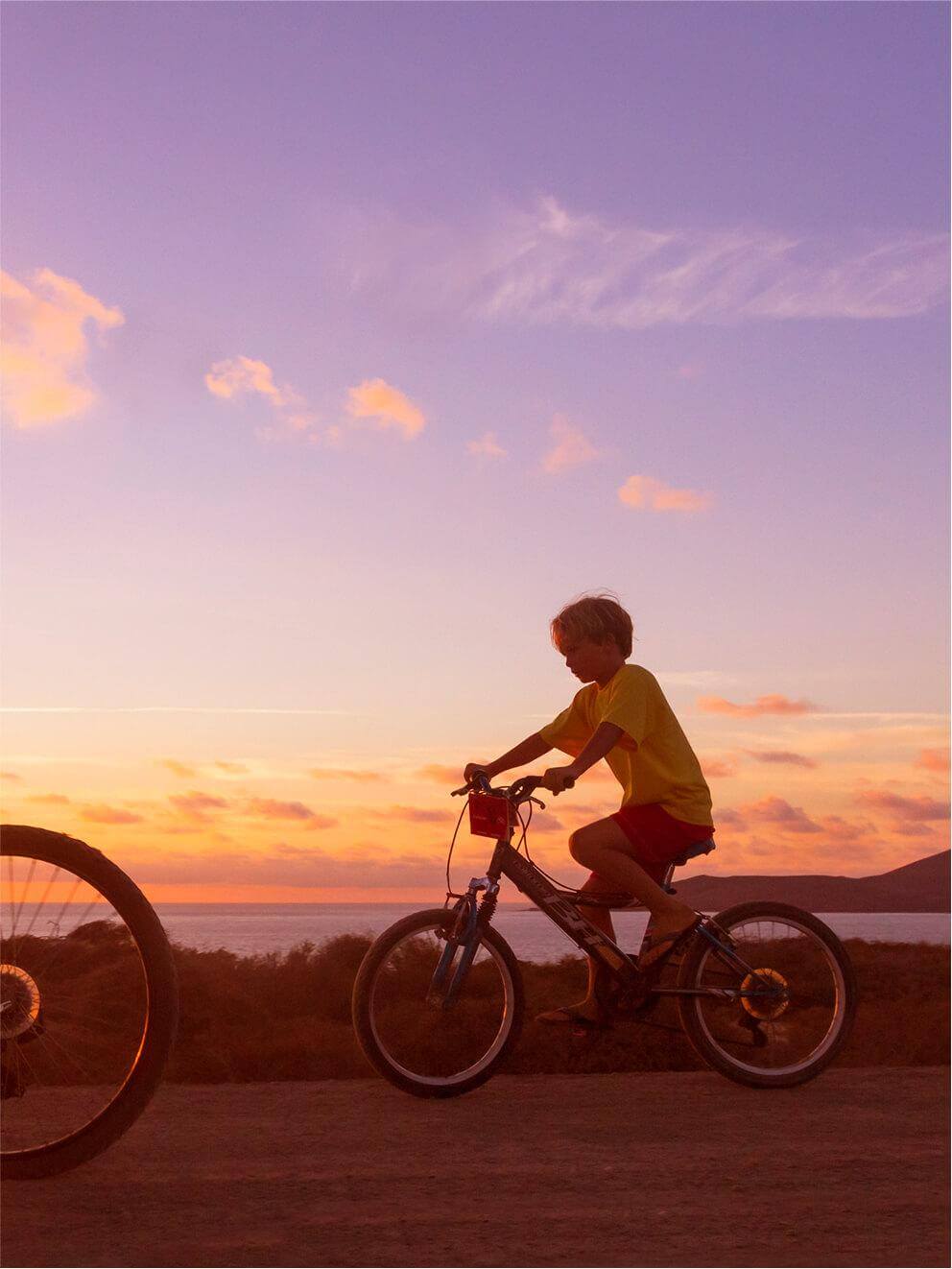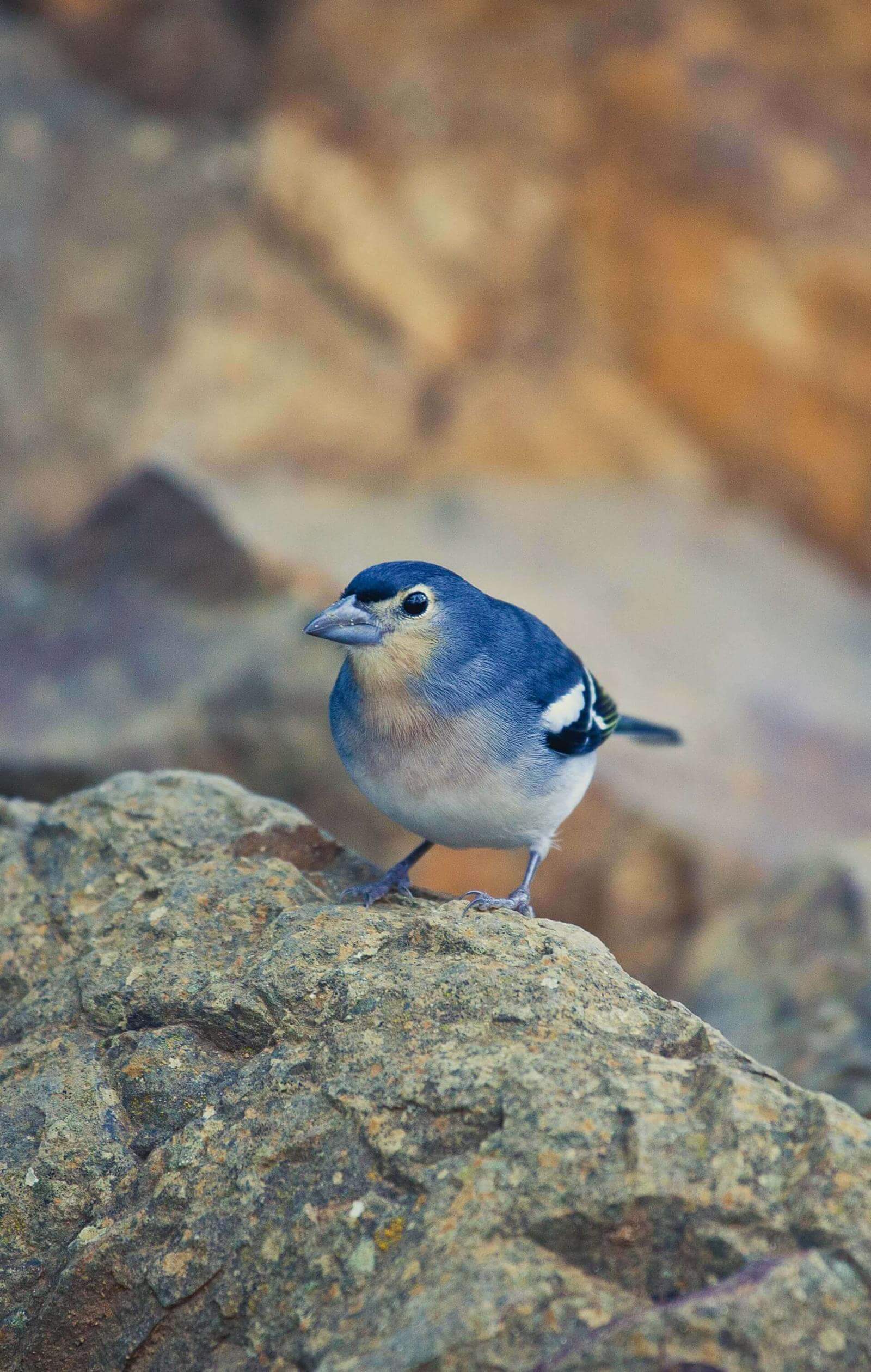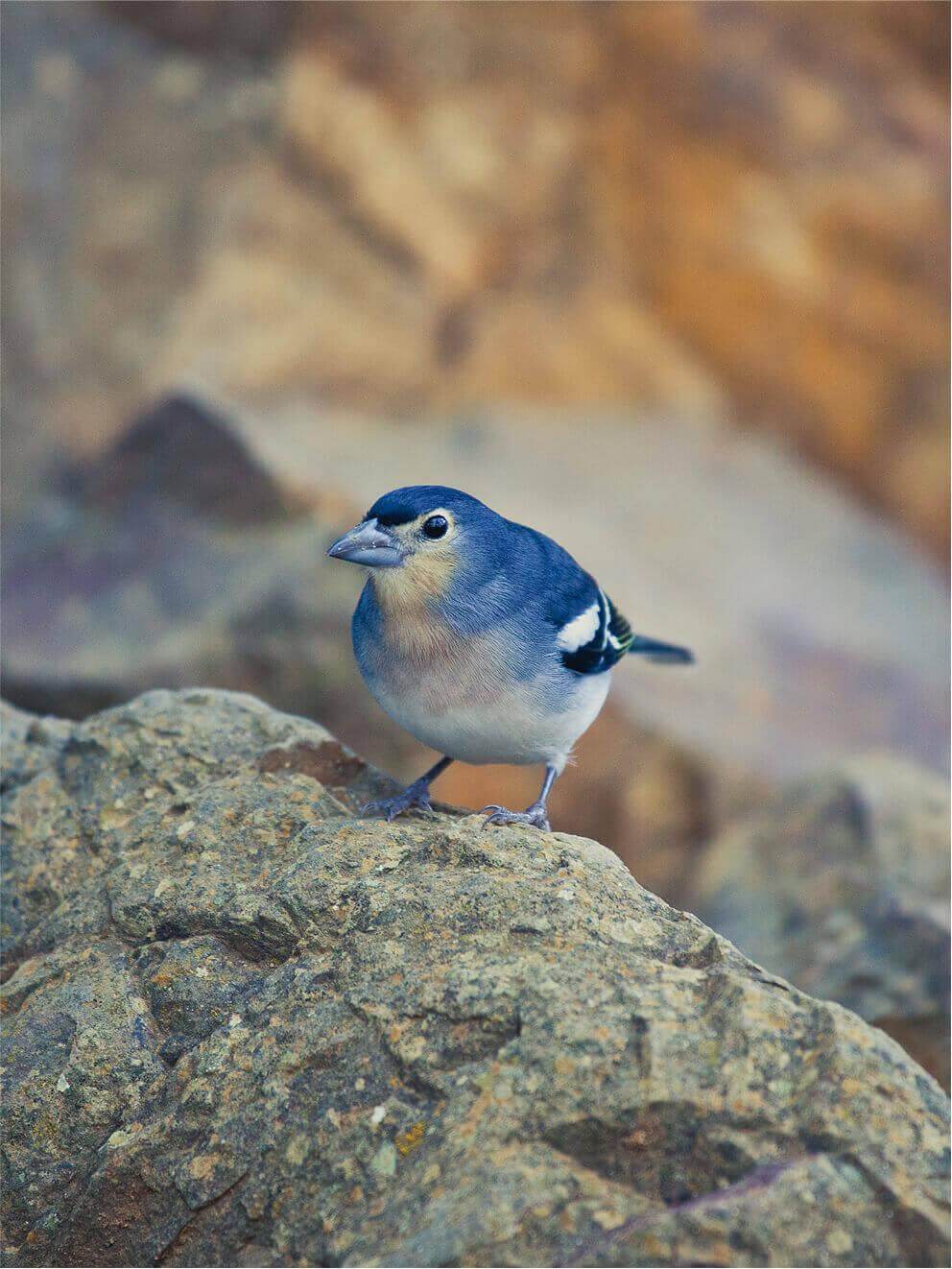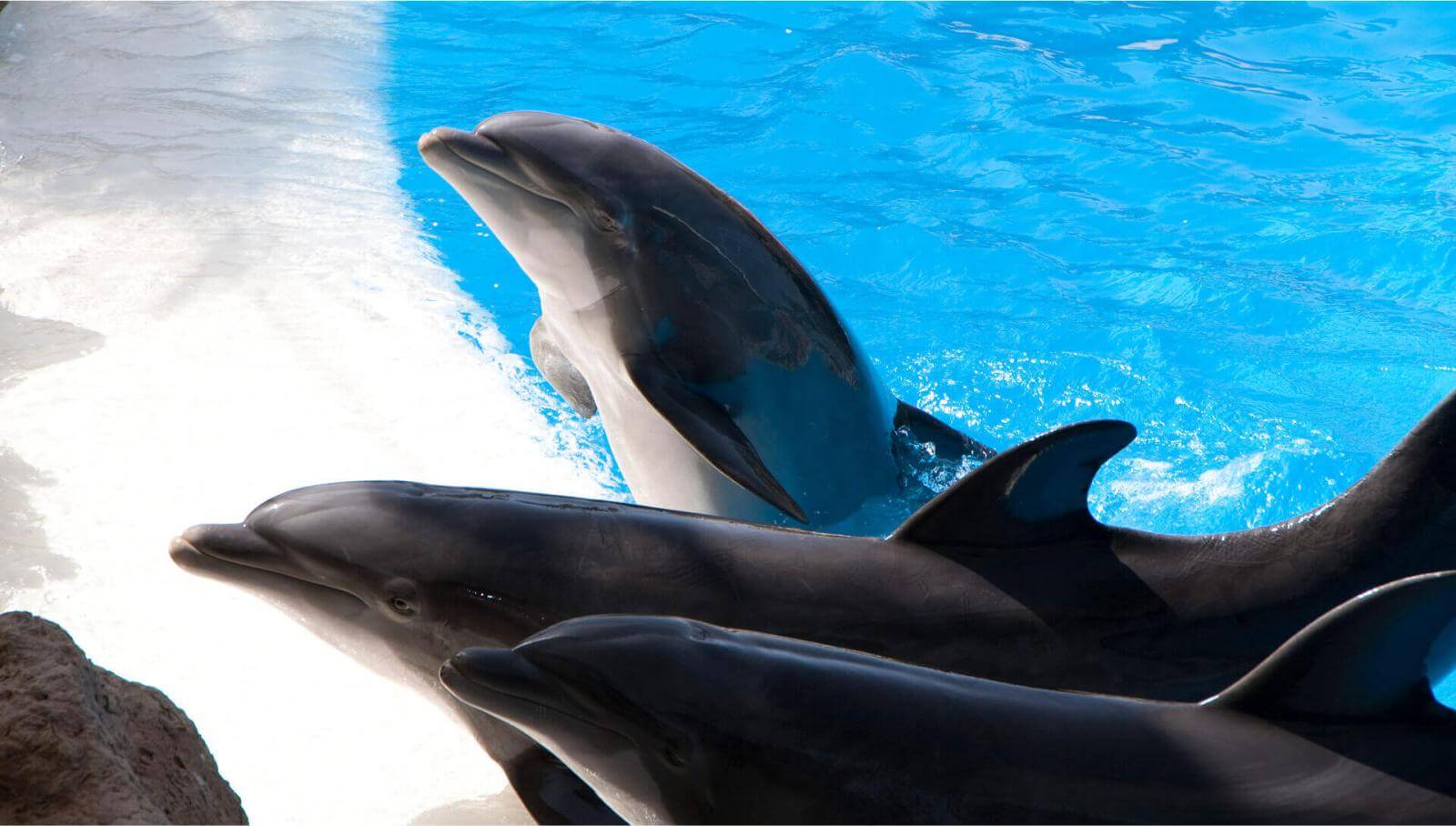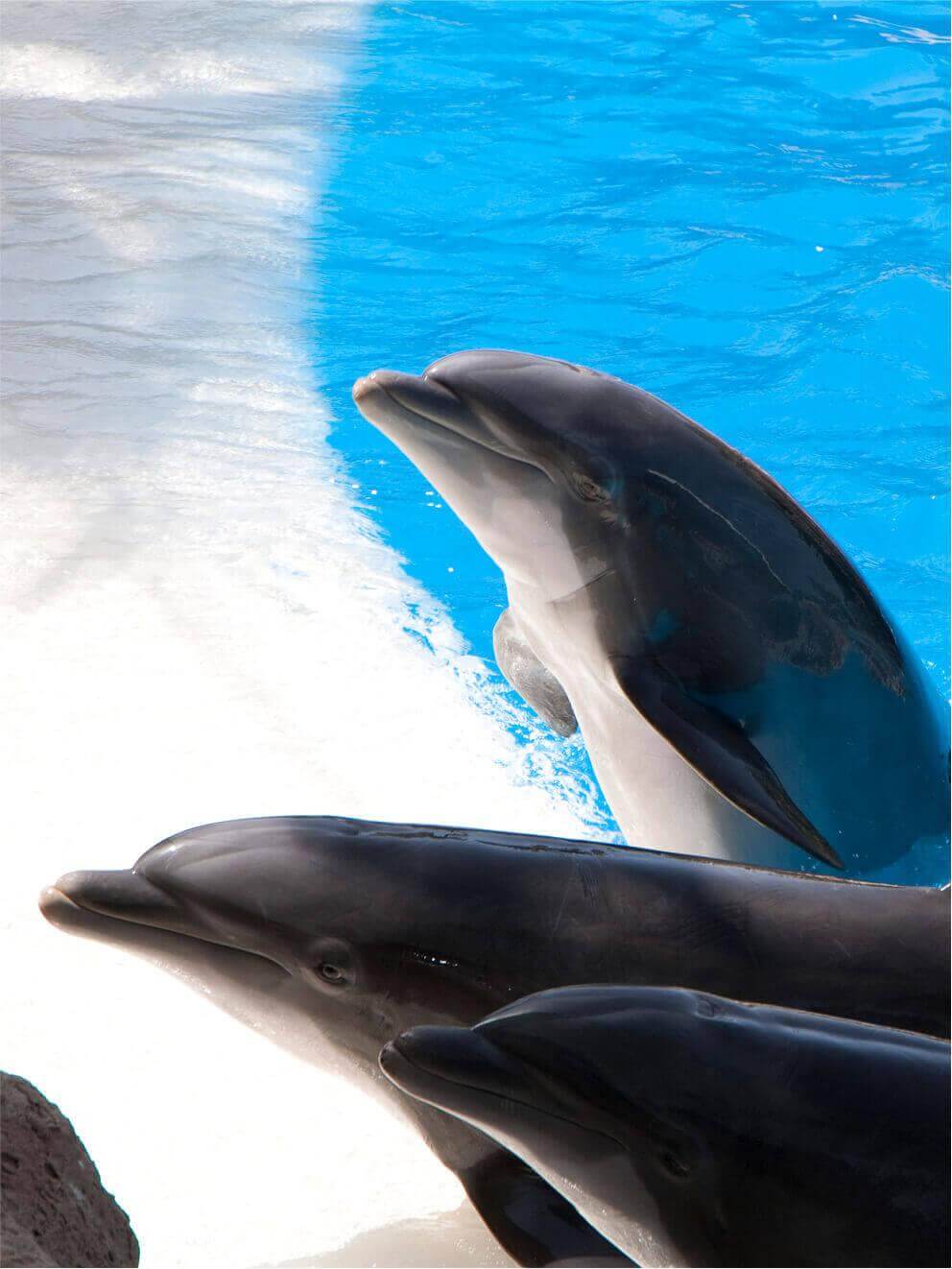3, 2, 1… Click! Visiting the Canarian archipelago as a family is so much more than creating a fun memory. The many singularities that make up each of the islands are a great way of stimulating children’s curiosity and helping them discover new horizons, like photography.
Travelling with children calls for a different approach. What do they really like? At first glance it may seem that the sand and the waves are a good choice, but there is no answer more sincere than the one offered by their own gaze when exploring their surroundings. Photography for children can be an ally when helping them discover a new environment like the Canary Islands, awakening interest in all that surrounds them and, maybe, sharing a hobby.
The first journey towards colour theory
Light is a common denominator of photography and the Canary Islands. The archipelago is bathed with 4800 hours of sunshine a year, enabling children to appreciate the vivid colours of nature in detail. Beaches like Las Teresitas in Tenerife or Las Conchas in La Graciosa are the perfect place for portraying the sea as it changes tone, going from turquoise to deeper blues throughout the day. The same is true of the beige of the sand, a complementary colour to blue. On beaches like Corralejo in Fuerteventura, or the Maspalomas dunes in Gran Canaria, the effect of the sun makes the sand shine, taking on dazzling tones that contrast with the Atlantic in the background, while at dawn and dusk it creates the most interesting textures on the surface.
It is not only the beaches of the Canary Islands that are full of colour. The interior of each island conceals unique palettes awaiting rediscovery by the curious gaze of children. The archipelago’s volcanic past has painted many landscapes with intense reds, browns and blacks, creating images difficult to find anywhere else. A simple excursion around places like the National Parks of Teide and Timanfaya, on Tenerife and Lanzarote respectively, or the caldera of Bandama on Gran Canaria, are enough to fill up a reel with a whole explosion of colour, although they are by no means the only option. The volcanic coves of La Palma, the rugged gullies of La Gomera or the lava landscapes of El Hierro offer another viewpoint dominated by the contrasts created by the dark lava flows and the light blue of the sky or the azure blue of the sea.
The archipelago’s forests are also a source of inspiration for young photographers. The palm groves and typical Canary Island palm forests create a sea of greens that invite one to plunge in, camera in hand, and be swept away. The islands are also home to laurissilva, a type of rainforest that enables us to travel in time and document what nature was like millions of years ago. Inside them the leafy trees filter the sunlight, creating fairytale atmospheres, especially on clear days, highlighting the green with greater intensity.
To finish colouring the experience, all that remains is to turn our gaze to the towns and villages. The white of the traditional hamlets of Lanzarote or La Graciosa and the curious way in which they glow at midday, or the colourful façades of Santa Cruz de La Palma, La Laguna on Tenerife and Vegueta on Gran Canaria are the best way of returning home with an album full of colours and experiences.
Fun ways of awakening a curiosity for photography
The archipelago’s grand landscapes are often just the setting. Because some trees, plants and natural formations are so curious that they become unexpected stars capable of drawing everyone’s gaze. This is the case of Los Órganos in La Gomera, the twisted junipers that inhabit the westernmost tip of El Hierro, the photogenic dragon trees of Tenerife and Gran Canaria, the unusual shapes of the spurges and Canary Islands candle plants of Lanzarote and a host of cacti and flowers that wait, motionless, for their best angle to be captured on film.
Wild memories
In the Canary Islands, one can see more than 10,000 species of animals, some of them unique - a wonderful challenge for the eyesight and patience of children. But photographing fauna requires respect, which means not invading their space or disturbing them. A principle which, when observed, always offers up a great reward in the form of superb snapshots. To start with, one of the most singular and the easiest to capture on camera are jameitos, a type of blind crabs that are only found in the pools of Jameos del Agua, Lanzarote. Lizards are also a veritable hallmark of the archipelago. Perhaps the most representative ones are the Gallot’s lizard of Tenerife, the Gran Canaria giant lizard, the Atlantic lizard of Lanzarote and the Simony’s giant lizard of El Hierro, which lives in Roques de Salmor but can also be seen at the Lagartario lizard recovery centre. Photographing them, however, is no easy task, especially in the wild. Their speed and skittish nature call for calm, slow movements and an ability to keep one's distance in order to take the perfect picture.
There are also different types of animals fluttering around the Canarian sky waiting to be photographed. Butterflies, for example, are very common on islands such as La Palma and La Gomera, as well as in the Mariposario del Drago butterfly park on Tenerife, where one can take a closer look at over 800 species of lepidopterans. Their constant fluttering can pose something of a challenge in terms of taking a clear picture, but with time and silence, their huge variety of colours can be portrayed. With a good camera lens, one can also make a game of going on an ornithological safari and photographing the day-to-day life of different bird species in their habitat. In coastal areas, for example, it is very common to see Scopoli’s shearwaters, as well as coming across the small, colourful common kestrels on the islands of Gran Canaria and La Palma. Inland one may also come across other species, like chaffinches, which usually frequent the island of La Palma, or the African houbara, which can be seen in arid areas of Fuerteventura, Lanzarote and La Graciosa.
To complete your album, visit specialist installations such as the Rancho Texas Lanzarote Park, Oasis Park Fuerteventura, Poema de Mar on Gran Canaria and Loro Parque Animal Embassy on Tenerife, a world-famous zoo that houses over 400 animal species and 300 types of parrots.
The first dive into underwater photography
Below the warm waters of the archipelago lies a wealth of marine fauna that can be explored in different ways. In places like La Restinga, the Marine Reserve of the island of El Hierro, all you need is some goggles, a snorkel and an underwater camera to encounter tropical fish which, in spite of being slippery customers, can result in clear photographs due to the good visibility on the seabed.
Another different yet exciting experience is whale, dolphin and turtle watching, an activity that can be carried out safely and respectfully in many parts of the archipelago thanks to different specialist companies. Portraying dolphins, northern fin whales or other whales is a way of practising a freer, more intuitive kind of photography, perfect for children. It is enough to set the camera to automatic focus, hold it tight and go with the flow.

An album full of fun
When you are with family, any time is good for taking a photo to immortalise the moment. In the Canary Islands there is a whole ocean of ideas designed to allow children to express themselves freely and show off their best smiles. Water parks full of slides like the famous Siam Park on Tenerife and the Aqualava Waterpark on Lanzarote, as well as theme parks such as Sioux City Park on Gran Canaria, combined with viewpoints and astronomical observatories where one can snap sunsets or play at discovering planets, plus curious museums and truly singular places. Because children find beauty in the most unexpected things, so their pure, unfiltered gaze can be the perfect complement for documenting a memory in the form of a getaway.



